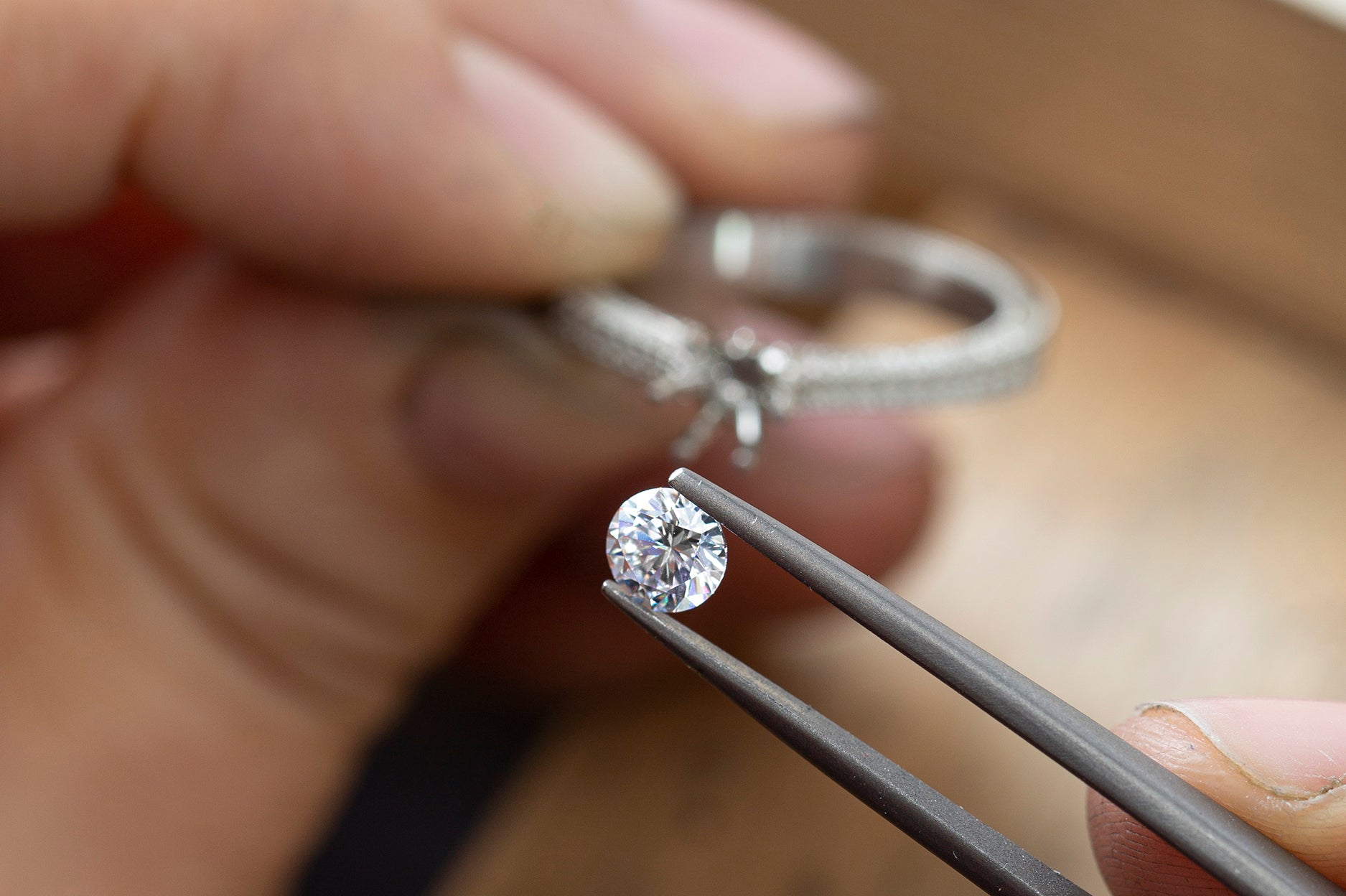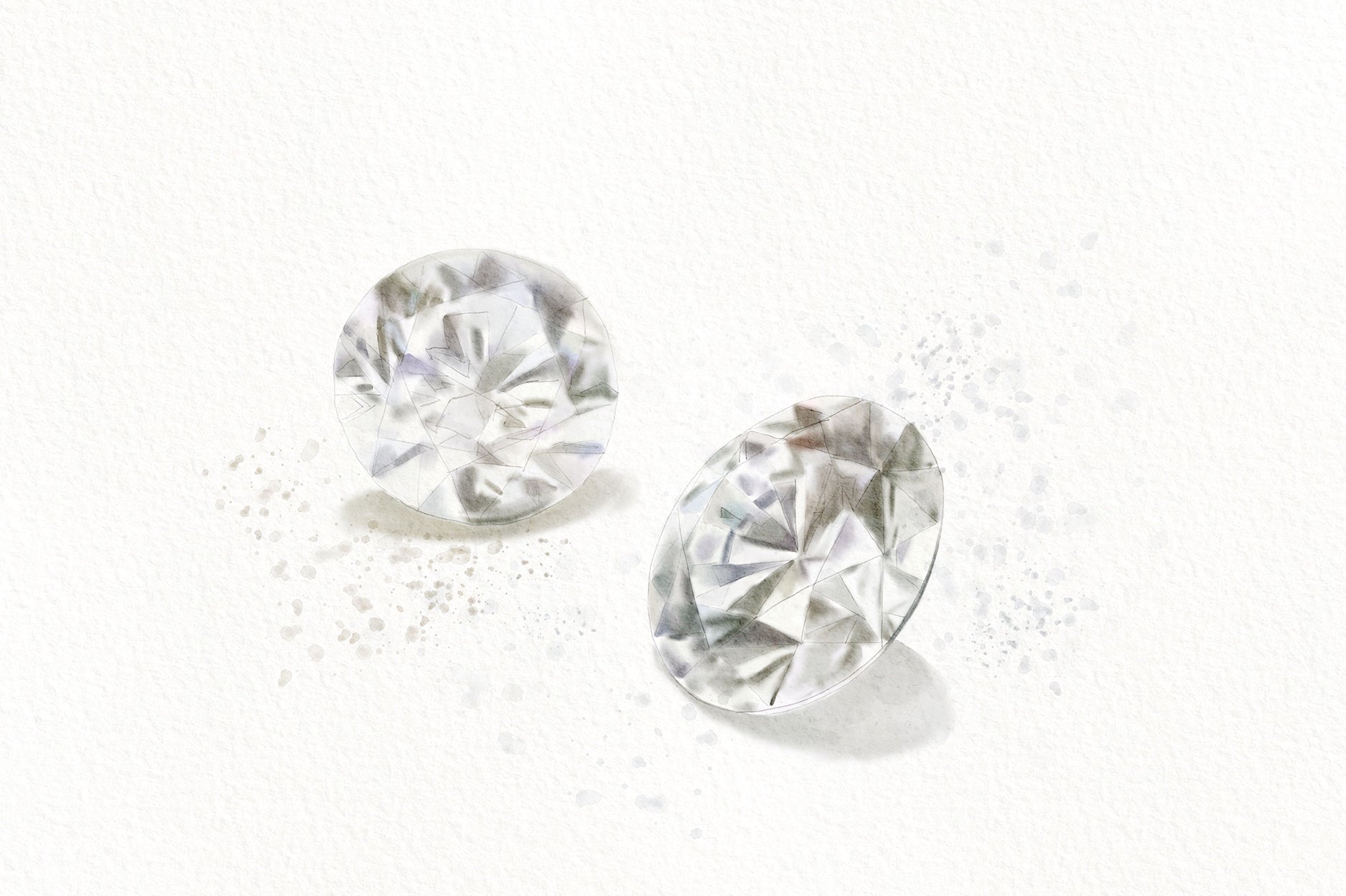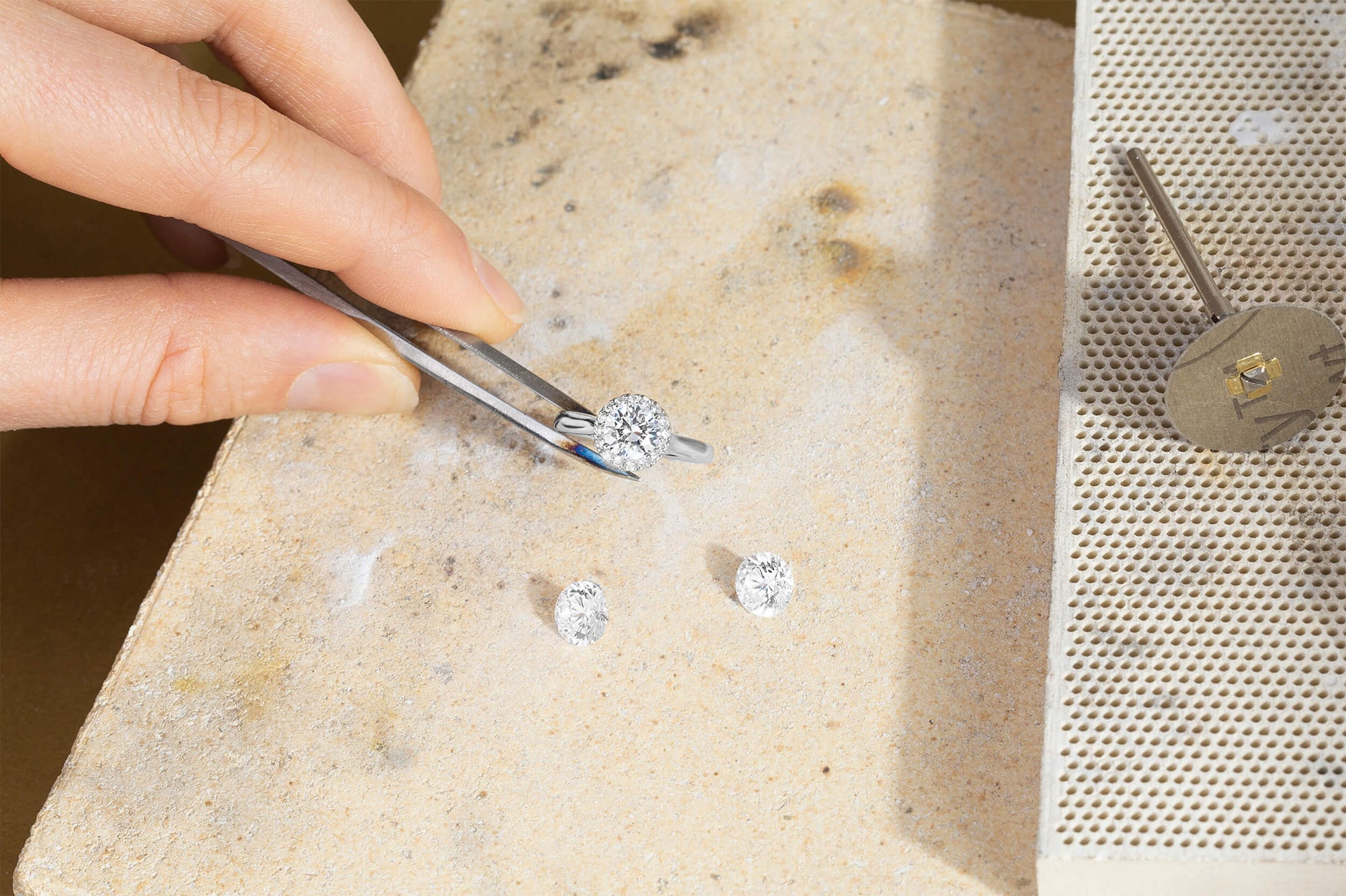Moissanite vs. Diamond: Which one should I buy?
To the casual jewelry shopper, moissanites and diamonds can look a lot alike. However, up close, they’re very different. Not only are they distinct in appearance, but they also differ significantly in value. This article covers the main differences in price and appearance between these two stones. Read on to make an informed decision when choosing between a moissanite and a diamond for your engagement ring.

What is moissanite?
Moissanite was first discovered in 1893 by a French scientist named Henri Moissan. The stone was found in a crater in Arizona left behind by a meteor that had previously fallen to Earth. Initially, Moissan thought he had discovered diamonds but later determined the stone to be composed of silicon carbide.
Where does moissanite come from?
Natural moissanite has been found in the USA and Russia, but for the most part, all natural moissanites come from space. Nowadays, moissanites are engineered in a lab environment to mimic the appearance of diamonds, but they differ significantly in composition and visual characteristics from authentic diamonds. The durability, brilliance, and colour of these two stones are noticeably distinct. Moissanites can be an appealing option for those seeking an eco-conscious stone, but for those who want the real brilliance and value of diamonds, lab-grown diamonds are the way to go. At Ecksand, we only source conflict-free natural diamonds and earth-friendly lab-grown diamonds.
Moissanite vs. diamond side by side

Can you tell the difference between a moissanite and a diamond?
From a distance the two appear somewhat similar, however, upon closer examination the differences become easier to spot. And as the two vary in composition, they are also quite distinct, especially when it comes to their colour, clarity, brilliance, and durability.
Moissanite vs. diamond colour?
Diamond colour is graded on a scale ranging from D (colourless) to Z (visible tint), and this grade can play a big role in how a diamond is priced. The closer the stone is to being colourless the more value it has. Conversely, moissanites are not categorized by colour. In fact, they often show yellow, green or grayish tints in certain lighting. If one were to try and measure a moissanite on the GIA colour scale mentioned above, it is often compared to the K grade (a category with a faint tint).
Moissanite vs. diamond clarity?
The clarity of a stone refers to the amount or lack of blemishes and inclusions visible on a stone. Like diamonds, moissanites are imperfect and often have small blemishes. However, because moissanites are lab-grown, they often appear flawless or eye-clean, and their imperfections are microscopic. Although a diamond is more likely to feature inclusions and blemishes that are visible to the eye, at Ecksand, regardless of the engagement ring, wedding band, or item of fine jewelry, we ensure that we have only eye-clean diamonds on all of our pieces.
Moissanite vs. diamond brilliance?
Brilliance refers to the appearance of the light reflected from the interior of a gem. Basically, it is that dazzling display of sparkle diamonds are known for. A gem’s ability to refract light varies from stone to stone, but in general moissanites display a high amount of brilliance. Like diamonds, the geometry and composition of a moissanite allow it to disperse and refract light similar to a diamond, whose light refraction can also be dictated by its cut. However, while they do not lack brilliance, moissanites sparkle slightly less as the facets within them reflect light differently than those of diamonds.
Is moissanite harder than diamond?
Stone durability is measured on the Mohs scale of hardness on a scale from 1 (softest) to 10 (hardest). With diamonds measuring a 10 on the scale, they are the hardest known natural mineral. Moissanite, on the other hand, only measures at a 9.25. Although this may not seem like the biggest difference, it does make moissanite far more susceptible to scratches and damage than a diamond. This is one of the most obvious distinctions between the two. Bottom line: both natural and laboratory-grown diamonds are much more durable than moissanites.
Why is moissanite cheaper than diamonds?
You can buy a moissanite ring at the fraction of the cost as a real diamond, but is it worth the savings? We hear this question often at Ecksand, especially with regards to the price of engagement rings. Simply put, moissanite is less expensive than diamonds because it is worth less. They lack the uniqueness and rarity a natural diamond holds. Not to mention they are far less durable.

Final thoughts…
While moissanite may be engineered to look like a diamond, it is not a diamond. So which one should you choose? That depends on the individual. If you are looking for a jewel that can be passed down from one generation to the next, such as the much-loved Tapered Diamond Engagement Ring with Basket Setting from our Solitaire Collection, then diamonds are for you! Or perhaps you are simply looking to save, well then moissanites are the perfect choice to cut costs. Ultimately, it is your decision, and whichever stone you prefer is the right one for you. No matter your choice, Ecksand only sources ethical, conflict-free diamonds because we believe in the true beauty that brilliant diamonds have to offer.
Read more
Top 10 Diamond Earrings by Ecksand: Studs, Hoops, Crawlers & Drops
Handcrafted in Montreal, these ten diamond earrings, anchored in recycled gold and set with natural or lab-grown stones, span icons to statement silhouettes. Editorial picks for a stack that lasts.
At Paris Fashion Week, Ecksand Reveals Aura
Amid the rhythm of Paris Fashion Week, Ecksand reveals a vision of strength and refinement. The Aura collection redefines modern jewelry through design precision and intent.
How to Care for Your Diamond Jewelry and Keep Them Sparkling
Diamonds may be famed for their hardness and durability, but they still require proper care to maintain their brilliance. Over time, dust, oils, and product build-up can dull a diamond’s sparkle. By following some simple diamond care tips, you can ensure your precious stones remain as radiant as the day you got them.
Education
Engagement rings
Everything you need to know to find an iconic engagement ring for a moment that’s entirely your own.





























